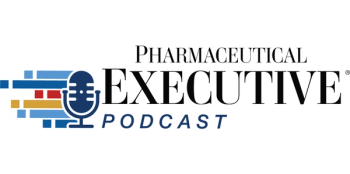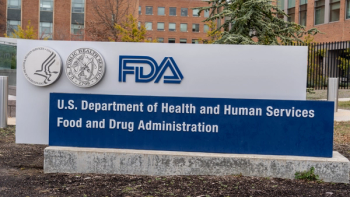“National priority vouchers are granted to a select group of products where the company has agreed to increase affordability, domesticate manufacturing as a national security issue, or address an unmet public health need,” FDA Commissioner Marty Makary, M.D., M.P.H, said in a press release. “We are pioneering new ways of bringing these cures and meaningful treatments to the market faster.”
FDA Continues to Expand National Priority Voucher Program
Key Takeaways
- The CNPV program now includes 15 therapies, focusing on critical public health and national security priorities like obesity, cancer, and drug-resistant tuberculosis.
- Accelerated review timelines reduce the traditional 10-12 month process to one to two months, expediting market access for high-impact treatments.
The FDA has added six new therapies to its Commissioner’s National Priority Voucher program, bringing the total to 15 products that address major public health needs, including obesity, cancer, sickle cell disease, and drug-resistant tuberculosis.
The FDA has named six new additions to the
FDA Expands National Priority Voucher Program to Speed Review of High-Impact Therapies
The latest selections include therapies for obesity, cancer, sickle cell disease, and drug-resistant tuberculosis. The program offers an accelerated review timeline designed to bring high-impact treatments to market faster.
“National priority vouchers are granted to a select group of products where the company has agreed to increase affordability, domesticate manufacturing as a national security issue, or address an unmet public health need,” FDA Commissioner Marty Makary, M.D., M.P.H, said in a press release. “We are pioneering new ways of bringing these cures and meaningful treatments to the market faster.”1
Which Drugs Have Been Named to the Commissioner’s National Priority Voucher (CNPV) program?
The latest additions to the program are:
Hernexeos (zongertinib) for HER2 lung cancerSirturo (bedaquiline) for drug-resistant tuberculosis in young childrenJemperli (dostarlimab) for rectal cancerCasgevy for sickle cell diseaseOrforglipron for obesity and related health conditionsWegovy for obesity and related health conditions
These medications join the first nine drugs that were announced for CNPV:
- Pergoveris for infertility
- Teplizumab for Type I diabetes
- Cytisinicline for nicotine vaping addiction
- DB-OTO for deafness
- Cenegermin-bkbj for blindness
- RMC-6236 for pancreatic cancer
- Bitopertin for porphyria
- Ketamine for domestic manufacturing of a critical drug for general anesthesia
- Augmentin XR for domestic manufacturing of a common antibiotic
Accelerated Review Process Designed to Reduce Drug Approval Timelines
- As part of the CNPV program, qualifying sponsors can obtain a voucher that enables the FDA to complete its review in as little as one to two months compared to the traditional 10–12-month review window after final submission.
- According to the FDA, the CNPV modernizes the agency’s regulatory frameworks to accelerate access to transformative therapies without compromising safety or comprehensive scientific analysis.
- As part of the program’s initial stages, a limited number of vouchers have been distributed to companies developing treatments that address urgent domestic health crises, unmet public health needs, or national security priorities, such as increasing US-based drug manufacturing.
- Medications that use Most Favored Nation pricing may also be considered for addition to the CNPV program.
CNPV Eligibility Focuses on U.S. Manufacturing, Affordability, and Unmet Health Needs
- To qualify for the CNPV, manufacturers must submit essential components of their application, such as the chemistry, manufacturing and controls section, and draft labeling at least 60 days prior to filing the full application.
- Sponsors must also remain in consistent communication with FDA reviewers throughout the evaluation process.
- The agency may grant accelerated approval under the program if statutory requirements are achieved for qualifying cases.
- The CNPV differs from the standard sequential review process by using a multidisciplinary “tumor board-style” model that is common in facilitating expedited review for oncology products.
- The FDA will designate a team of physicians and scientists for a pre-review of the submitted data, followed by a one-day meeting to analyze the data to reach a quicker regulatory decision.
FDA Adopts Multidisciplinary Tumor Board Review Model for Faster Decisions
“Using a common-sense approach, the national priority review program will allow companies to submit the lion’s share of the drug application before a clinical trial is complete so that we can reduce inefficiencies,” Makary said in a June press release. “The ultimate goal is to bring more cures and meaningful treatments to the American public.
“As a surgical oncologist, we often made multidisciplinary decisions with a team of doctors on major life-and-death questions for patients, incorporating the latest medical studies in a one-day tumor board-style discussion. This voucher harnesses that model to deliver timely decisions for drug developers.”2
References
1. FDA Awards Second Batch of National Priority Vouchers. News release. FDA. Published November 6, 2025. Accessed November 7, 2025.
2. FDA to Issue New Commissioner’s National Priority Vouchers to Companies Supporting U.S. National Interests. FDA. June 17, 2025. Accessed November 7, 2025.
Newsletter
Lead with insight with the Pharmaceutical Executive newsletter, featuring strategic analysis, leadership trends, and market intelligence for biopharma decision-makers.





